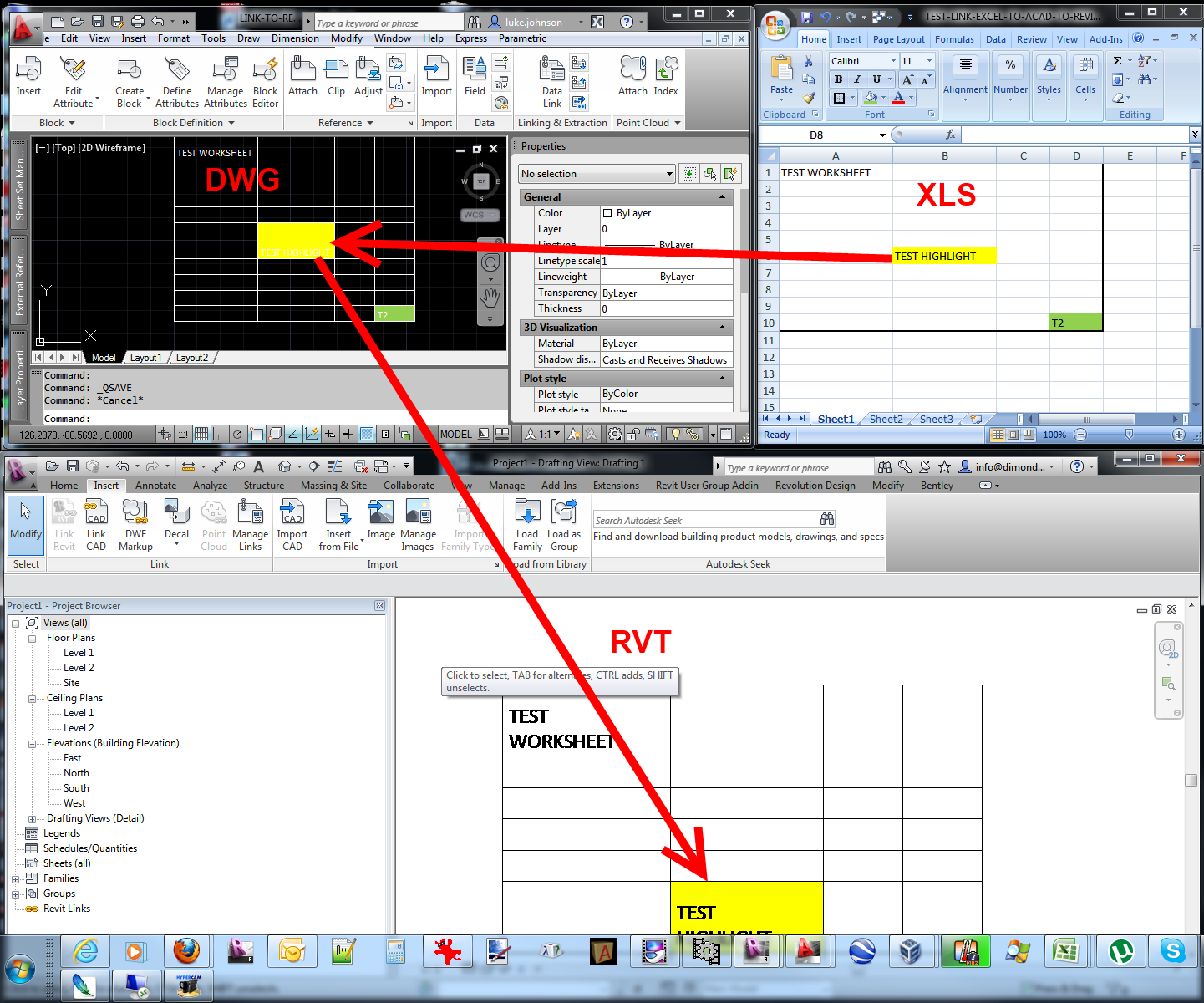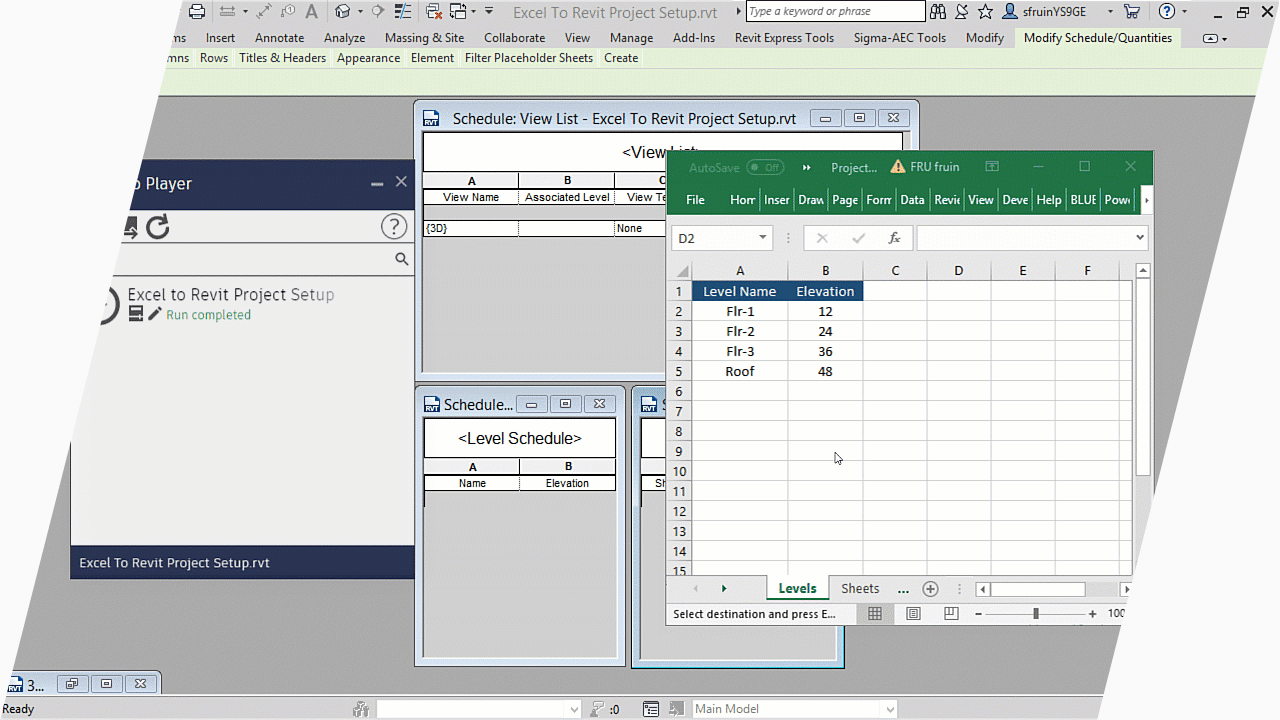Revit Excel Assimilation Demystified: Improving Operations for Improved Project Coordination
Look no further, since Revit Excel Combination is here to demystify the procedure and improve your tasks. In this write-up, we will lead you through the value of Revit Excel Assimilation, reveal you how to improve operations, and provide finest techniques for effective combination.
The Significance of Revit Excel Integration
You require to understand the value of Revit Excel assimilation to properly enhance your process and boost job sychronisation. The combination of Revit, a powerful structure details modeling (BIM) software application, with Excel, a widely made use of spread sheet program, supplies countless benefits for architects, engineers, and construction specialists.

By integrating Revit with Excel, you can eliminate hand-operated information entrance and reduce the danger of errors. This not only conserves time but additionally makes certain precision in your job documents. You can upgrade information in Excel, and it will immediately upgrade in Revit, maintaining uniformity throughout your job.
In Addition, Revit Excel integration enhances job coordination by allowing effective cooperation amongst group participants. With information integrated between Revit and Excel, everybody can access one of the most current details and interact perfectly. This advertises smoother communication, lowers problems, and enhances total project effectiveness.
How to Simplify Workflows With Revit Excel Integration
Maximize your procedure by seamlessly attaching Revit and Excel to simplify your workflow. By integrating these two effective tools, you can improve project control and enhance effectiveness in your job. With Revit Excel combination, you can conveniently move information between both systems, enabling smooth interaction and collaboration.

An additional benefit of Revit Excel integration is the capacity to produce custom reports and examine data better. With Excel's durable functions, you can carry out advanced estimations, develop charts and graphs, and produce extensive records based upon the data from your Revit models. This permits you to make and get useful understandings informed decisions throughout the task.
Enhancing Project Control With Revit Excel Assimilation
By flawlessly connecting your design software application with effective information evaluation devices, you can greatly enhance the sychronisation of your jobs. Revit Excel integration enables you to streamline your workflows and improve task control by eliminating hands-on information access and decreasing mistakes. With this combination, you can easily transfer information between Revit and Excel, making sure that all job information is up to date and precise.
Among the vital advantages of Revit Excel assimilation is the ability to import and export information in between both software program flawlessly. This means that you can easily import existing task data from Excel right into Revit, conserving you effort and time in coming back info. You can export job information from Revit to Excel, enabling you to carry out innovative analysis and calculations making use of the powerful functions of Excel.
Moreover, Revit Excel integration enables you to create vibrant links in between the two software (revit tool). This suggests that any type of changes made in Revit will automatically upgrade in Excel, and the other way around. This makes certain that all job stakeholders are functioning with the most updated info, boosting project coordination and decreasing the threat of errors
Conquering Difficulties in Revit Excel Integration
When conquering obstacles in the integration of Revit and Excel, it is essential to make sure seamless information transfer and decrease mistakes. One typical obstacle is the compatibility of data layouts in between Revit and Excel. To tackle this, you can make use of plugins or add-ins that help with the conversion of information from one layout revit plugins to another. These tools help maintain the honesty of the data during the transfer process.
One more challenge is the absence of synchronization between Revit and Excel. It's important to establish a clear operations that makes sure both systems are updated in real-time. This can be attained by utilizing cloud-based partnership tools or developing a system for regular information syncing.
Managing large datasets can likewise be bothersome. When it comes to handling large quantities of information, revit and Excel have various abilities. To conquer this obstacle, you can split the data into smaller, manageable pieces or utilize information filtering system strategies to focus on certain areas of rate of interest.
Finally, human error can cause discrepancies in between Revit and Excel data. It's essential to train group participants on the combination procedure and develop quality assurance procedures to catch any mistakes. Normal audits and cross-checks can assist recognize and remedy any disparities.
Finest Practices for Effective Revit Excel Assimilation
To make sure effective combination of Revit and Excel, it is very important to follow some best methods that will help streamline your process and minimize mistakes. Firstly, constantly begin by creating a clear and organized folder framework for your job data. This will make it less complicated to find and update the required files when required. Furthermore, when connecting Excel data right into Revit, make certain that the data is clean and totally free from any format issues that might cause errors. Usage constant naming conventions for your Excel columns and worksheets to stay clear of confusion.
One more essential method is to regularly update your Excel information in Revit. Make it a behavior to review and update the data at normal periods, specifically when changes are made to the job.

Conclusion
So, there you have it - revit Excel combination does not have to be a challenging job. With revit Excel assimilation debunked, you'll be well on your method to taking full advantage of the possibility of these devices and taking your jobs to new elevations.
You can export your Revit timetables to Excel, make adjustments or updates in Excel, and after that import the updated information back into Revit with just a couple of clicks. Revit Excel integration permits you to streamline your operations and boost job sychronisation by eliminating manual information entry and decreasing errors. With this integration, you can conveniently transfer data in between Revit and Excel, guaranteeing that all project details is up to day and exact.
You can export task data from Revit to Excel, enabling you to do advanced analysis and estimations using the effective attributes of Excel.
Additionally, when connecting Excel data right into Revit, guarantee that the information is free and tidy from any type of format concerns that can trigger errors.